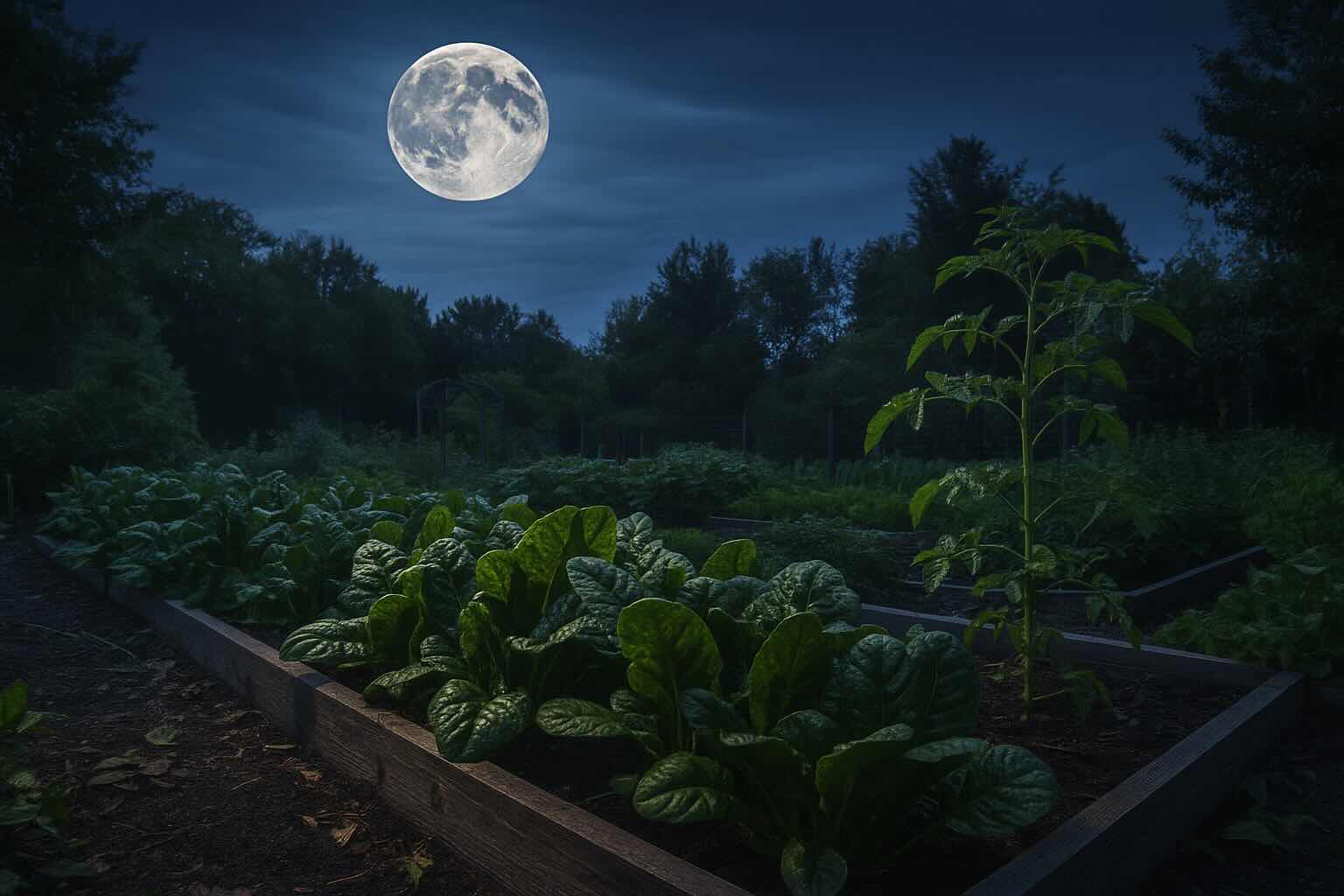Gardening is not only about soil and sunshine. For thousands of years, growers have turned to the sky for planting guidance. The moon, with its constant rhythm of waxing and waning, offers natural cues for when to sow, prune, and harvest. In 2025, lunar gardening continues to gain popularity as more people seek harmony between their gardens and the cosmos.
This moon gardening calendar for 2025 will help you align your planting with lunar phases. Whether you’re growing vegetables, herbs, or flowers, using the moon’s rhythm can give your garden a natural boost.
Why Follow the Moon for Gardening?
The moon’s pull affects tides, and though less visible, it also influences groundwater and soil moisture. Seeds planted under certain lunar phases absorb water differently, which can impact germination and root strength. In addition, moonlight itself may subtly affect plant metabolism, much like sunlight guides photosynthesis.
By understanding these rhythms, gardeners can schedule planting at times when nature is already working in their favor. It’s a way of tuning into a cosmic pattern that farmers once relied upon before modern tools and calendars.
Understanding the Lunar Phases
Each month, the moon completes a cycle through four primary phases. Each phase corresponds to different kinds of gardening tasks:
New Moon
Energy draws downward into the soil, making this phase ideal for sowing root crops like carrots, onions, potatoes, and beets. It’s also a good time for transplanting trees and shrubs.
Waxing Moon
As the moon grows, energy moves upward. This is the perfect time to plant leafy greens, grains, and herbs. Lettuce, spinach, basil, and parsley thrive if planted during the waxing phase.
Full Moon
The moon is at its brightest, and plants are at their most active. Sow fruiting and flowering crops such as beans, melons, cucumbers, squash, and tomatoes. Harvesting during a full moon is believed to enhance flavor and storage life.
Waning Moon
Energy begins to withdraw back toward the roots. This is the best time for pruning, weeding, and soil care. It’s also a good period to harvest root crops, as they store better when gathered now.
Moon Gardening Calendar 2025 Highlights
Below are some key lunar dates for 2025 that gardeners can mark on their calendars. (Note: phases may shift slightly depending on your time zone.)
January 2025
New Moon: January 29 – Start root crops indoors.
Full Moon: January 13 – Ideal for sowing leafy greens in mild climates.
Spring 2025
As days lengthen, spring planting aligns beautifully with lunar cycles. The full moon on April 12 is excellent for sowing beans, peas, and early tomatoes. The new moon on March 29 supports strong root development for potatoes and onions.
Summer 2025
Summer brings long days and abundant growth. The full moon on July 10 is a prime date for sowing cucumbers, peppers, and squash. The waning moon in late July is perfect for pruning vines and managing weeds.
Autumn 2025
In the fall, lunar gardening helps with storage crops. The new moon on September 21 is excellent for planting root vegetables for winter harvest. The full moon on October 6 favors pumpkins and late squash.
Winter 2025
Even in colder months, lunar gardening offers guidance. Use the waning moon in December to prepare soil, compost, and prune dormant trees. The new moon on December 21 encourages strong root establishment for garlic and winter onions.
Tips for Using the Calendar Effectively
Following the moon is not about rigid rules—it’s about rhythm. Here are ways to get the most out of your 2025 lunar gardening calendar:
1. Pair lunar planting with seasonal conditions. Even the best moon phase won’t overcome poor weather or frost.
2. Keep a gardening journal. Note which crops thrive when planted under different phases.
3. Combine lunar gardening with organic practices like composting and mulching for best results.
4. Stay flexible. The moon can guide you, but your local soil and climate matter just as much.
The Benefits of Gardening by the Moon
Gardeners who follow lunar cycles often report healthier plants, better yields, and less stress. Some even say their gardens feel more alive, as if attuned to a natural rhythm. While science may not confirm every detail of lunar gardening, many growers find that it deepens their connection with both plants and nature.
Looking Ahead: A Cosmic Partnership
The Moon Gardening Calendar 2025 is more than a schedule—it’s a reminder that our lives and gardens are tied to cosmic patterns. By planting with the moon, you’re not only improving your harvests, you’re also honoring a tradition that has guided human hands for thousands of years.
As 2025 unfolds, try marking your planting days by the lunar phases. Watch your crops respond, and perhaps you’ll feel that quiet connection to the stars above and the soil below. In every seed, the moonlight may already be working its magic.
Final Reflection
Whether you believe the moon has a mystical influence or simply appreciate its natural rhythm, gardening by the lunar phases is an enriching practice. It adds patience, timing, and awareness to your daily work in the garden. In 2025, let the moon be your silent partner in growth, guiding your hand as you plant, tend, and harvest.
